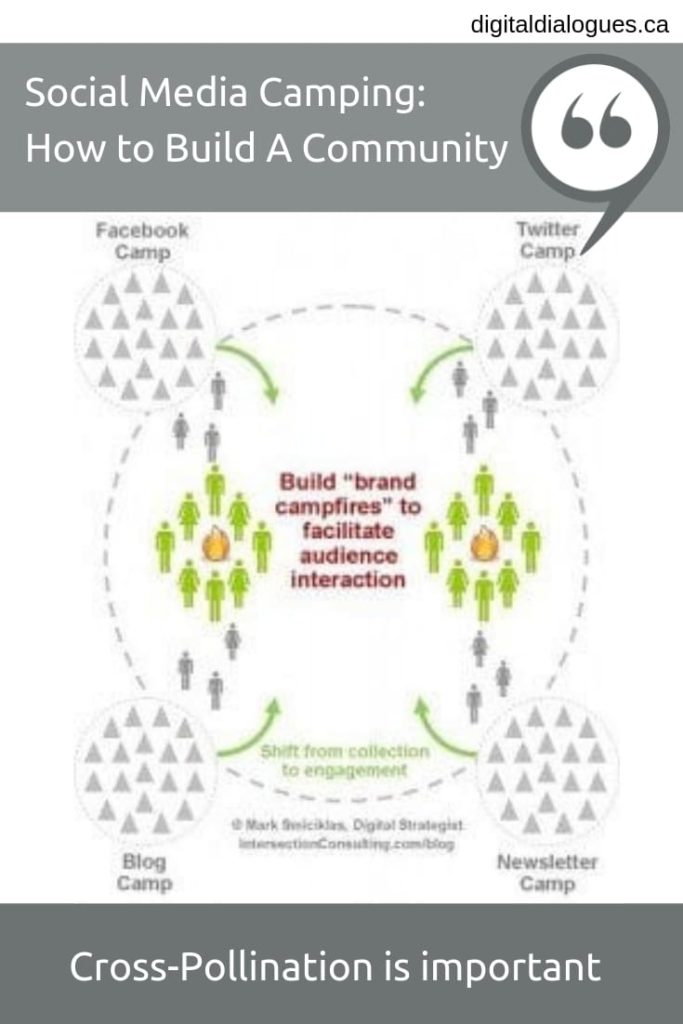In my last post, I shared why I thought that the book Groundswell was a piece of the convincing puzzle in social media – for those who remain skeptical about the value of online marketing. I included a chart that described what most businesses are doing everyday and how those activities translate to online behaviour.

This morning, as I was wondering around on the web, I came across this visual (thanks to Mark Smikilas at Intersection Consulting for it). Mark probably used it in another context, but when I looked at it, I was reminded that if you are trying to reach your customers, you better be where they are and begin to build relationships with them there.
Where are your people online? Are they reading or creating blogs? Do they hang out at Camp Twitter? Some may have not even ventured from Camp Newsletter (good reason not to give up that newsletter yet). Your mission – should you choose to accept it, is to find where they are and camp with them. Spend time and build relationships with them.
As you build campsites in different locations (your blog, your newsletter, Facebook, Twitter or Instagram) you don’t have to keep your camps separate. In fact, one of your goals should be to cross-pollinate. As content creator, you can invite folks to visit other camps.
At Camp Newsletter, provide opportunities for people to visit Camp Facebook. At Camp Twitter, you can invite folks to Camp Blog. In this way, you introduce your audiences to one another, enhance both their online experience and find new ways to engage with them. You are helping to build audience interaction.
Where are your audiences? And how have you set up your camps? Do you cross-pollinate? And how is that working?
Let me know!
Photo Credit: Intersection Consulting


I personally think you need a mix of them all. Reading blogs, Camp Twitter and Camp Facebook. The more mediums that you have time to participate in, the better for you.
The key is to spend the most time where your connections spend it. Some mediums work better for some people and some mediums work better for others.
Thanks for your comment, Rob. And I agree with you. At the same time, it can be overwhelming for those who are new-ish to social media to dive in all at once. Here is the stress for businesses, I think. Businesses know that they need to migrate to the web but their identified customer base are not yet engaged. They need to help their clients to migrate. How can they do that? Some easy transitions might include adding links in email newsletters to introduce your blog or FB or LinkedIn.
The problem many of my clients are facing is that they don’t use social media themselves. Many are slow to realize that if their customers are on Facebook then they need to be on Facebook too. I explained to a client yesterday the difference between a facebook profile and business page. Small business owners need to educate themselves and not be afraid of social media tools. You are so right. It is about finding out where your audience is online and joining them.
Your comment speaks directly to needing to provide education and guidance to those who are newer to social media. Thanks for your thoughts.